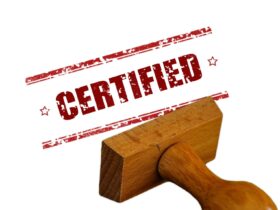Are unpaid invoices draining your business resources?
Using small claims court presents a straightforward way to resolve your unpaid invoices. Taking small claims court action stands as the best solution when clients stop responding while their invoices remain unpaid.
But here’s the thing…
The majority of business owners shy away from small claims court because they believe it requires too much effort and legal knowledge.
- Too complicated
- Too expensive
- Too time-consuming
The truth? Small claims court allows average individuals to represent themselves without needing legal representation. The recent statistics showing 77,461 small claims cases filed in California during the 2023-24 fiscal year demonstrate that many business owners use this legal method to recover their payments.
This article helps you understand exactly how to go to small claims for an unpaid invoice and get the money your business deserves. Numerous small business owners have used this method to retrieve their unpaid debts and you can benefit from it too.
What you’ll discover:
- What Is Small Claims Court?
- When To Consider Small Claims Court
- Case Preparation Is Key
- Post-Judgment Steps
What Is Small Claims Court?
Small claims court functions as a streamlined legal system which facilitates the resolution of minor monetary conflicts without the need for costly legal representation.
Small claims court functions as a “legal-lite” system which allows non-lawyers to handle cases without difficulty. The streamlined process features minimal filing fees while ensuring an efficient overall experience.
During the fiscal year 2023-24 California experienced 77,461 small claims cases filed across the entire state. The petitioner in these cases seeks up to $12,500 while proceeding without legal representation.
Each state has different maximum claim amounts:
- California: $10,000 for individuals
- Texas: $20,000
- New York: $5,000
- Florida: $8,000
Small claims court enables equal opportunities for all parties to present their cases. A law degree is not necessary for success in court because organization, preparation, and clear evidence are the key requirements to win.
When To Consider Small Claims Court
Small claims court is not the proper solution for invoices that are unpaid. Here’s when it makes sense:
1. When To File:
- Your attempts at collection include sending reminders and making phone calls as well as sending demand letters.
- The debt amount meets the maximum claim limit set by your state.
- Your case stands strong because you possess a contract and an invoice along with communication records.
- The client resides in an area accessible through travel.
- The client possesses sufficient assets or income streams which could fulfill a court judgment.
2. When To Skip It:
- Your client cannot file a small claims case because they have declared bankruptcy.
- The effort may not be justified because the amount is below $200-300.
- Documentation is non-existent when there is no contract or proof of agreement through emails.
- When clients cannot be found it makes serving them impossible.
Small claims court exists for money recovery rather than for seeking revenge.
Locate The Correct Court
File in one of these locations:
- Where the defendant lives/does business
- Where the contract was signed
- Where the work was performed
Your case will be dismissed if you file it in the incorrect jurisdiction.
3. Complete The Filing Forms
The required forms for filing can be found on your local courthouse’s website.
- Complaint/petition form
- Summons form
- Information sheets about the defendant
The Court Statistics Project collects standardized data on state court caseloads throughout the United States.
4. Pay The Filing Fee
Your state determines the filing fees which generally fall between $30 and $100. The majority of courts allow payment through cash as well as credit cards, money orders and personal checks.
When you find the filing fee unaffordable you should inquire about fee waiver options.
5. Serve The Defendant
You must serve the defendant properly before your case can move forward. Options include:
- Certified mail with return receipt
- Hiring a process server
- Sheriff service
- The documents need to be delivered by an adult who is not you.
You must maintain proof of service because it will be required during court proceedings.
6. Wait For The Hearing Date
The court will establish a hearing date which normally falls between 30 to 70 days following the submission of the filing. Use this time to organize your presentation.
Case Preparation Is Key
Winning depends on preparation. Here’s how to build a compelling case:
Evidence Organization
Create a binder with:
- Contract with payment terms highlighted
- Invoices by date
- Delivery proof
- Payment demand records
- Accounting of amounts owed
Take three copies of your documents with you to court to cover your needs and those of both the judge and defendant.
Timeline Creation
Create a one-page timeline showing:
- Contract signing
- Work delivery
- Invoice dates
- Payment due dates
- Demand letter dates
Opening Statement
In your 1-3 minute explanation, cover:
- Your business
- Your agreement
- Work completed
- Amount owed
- Resolution attempts
- Amount seeking
Defense Preparation
Counter these common excuses:
- “Unsatisfactory work”
- “No formal agreement”
- “Misunderstanding”
- “Can’t afford payment”
Courtroom Behavior
- Dress professionally
- Say “Your Honor”
- Don’t interrupt
- Stick to facts
- Take notes
Post-Judgment Steps
After winning a case you must face the real challenge which is collecting the judgment.
The number of filings in regional courts of appeals went down by 3% reaching 39,469 in the year 2024 according to Federal Court data.
If You Win:
The judge declares a judgment that specifies an exact sum to be paid. Collection options:
- Bank Levy: Execute bank account withdrawal from defendant using legal authority from court order.
- Wage Garnishment: Receive wage payments from the defendant until the debt is fully settled.
- Property Liens: Place lien on property, paid when sold.
- Till Tap: Have the sheriff collect from the business cash register.
- Debtor Examination: Force the defendant to answer questions about assets.
Remember: A judgment is just paper until enforced.
If You Lose:
Options include:
- Accepting decision
- Filing appeal (if allowed)
- Attempting direct settlement
The Bottom Line
The process of filing a case in lower courts for small unpaid invoices is straightforward but demands careful organization and attention to detail.
Key takeaways:
- All court victories depend on proper documentation because contracts and records lead to winning a case.
- Choose the proper jurisdiction for filing to prevent case dismissal.
- Proper service of process is essential
- Preparation dramatically increases winning chances
- Collection requires additional steps after winning
Small claims court serves as a highly effective instrument for small business owners to reclaim their owed funds in appropriate scenarios.
The best part? You don’t need expensive legal help. This guide combined with thorough preparation provides you with all necessary tools to successfully complete the small claims process and collect payment for your services.
Have you brought a client before a small claims court? What was your experience like?










Leave a Reply